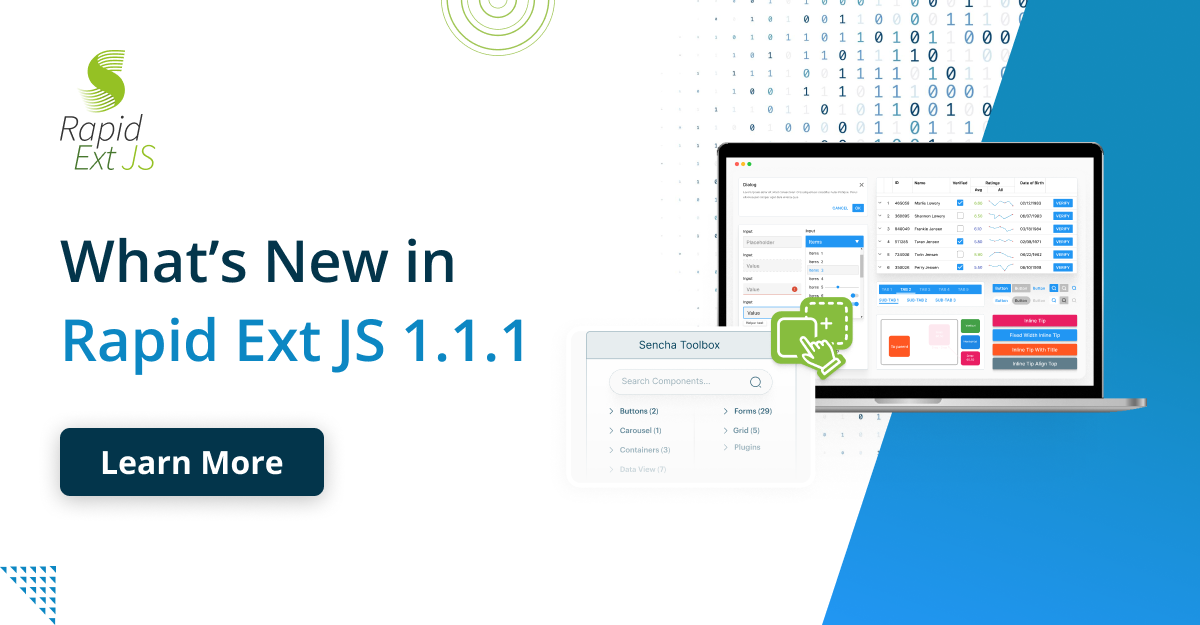Sencha Touch Customer Spotlight: Nervana Group
Nervana Group is an interactive innovation firm that focuses on developing solutions for clients who want to interact better with their customers. Nervana Group won the Chicago Innovation Awards based on our hospitality technology and was featured as one of the Top 100 Most Innovative Companies in Chicago.
We use Sencha Touch to build mobile apps and large format touch screens for many different clients including Hard Rock Hotel, Swissotel and DePaul University. What’s unique about the applications we build is our methodology and approach to make emotion a key element in scoring our software before delivering to the client. Our five pillars of measurement are Features, Functionality, Design, Usability and Emotion.
IMAGE HERE – LEYE-Mixboard-Filters.png
CAPTION HERE:
Built an app on a large form factor using Sencha Touch. This application is running on a 55″ touch screen.
Why We Chose Sencha Touch
We chose Sencha Touch because it reduces our development time and lets us work interactively with our clients. And, we’ve used Sencha Architect as a starting point for all of our most recent projects. Rather than presenting static Photoshop layouts, we walk into a meeting with an actual working, interactive prototype. Sencha Touch is a fast, clean, high-performance framework that fits our thinking and helps us to win new clients. We’ve used Sencha Touch since it came out in early beta, so we’re very experienced with the framework and thrilled with how much faster we can build apps.
The Sencha Touch MVC pattern gives us the assurance that whatever we build, we can expand. It’s a big advantage over other frameworks like JQuery Mobile. That’s critical for our strategic direction in development because we always need to be ready for changes as our clients’ requirements evolve. Having the ability to separate out components, both MVC and the whole component library is key to reducing development time. We can have developers work on different parts of the project, and the framework provides development patterns that ensure we’re using best practices to organize our code. We’ve done a lot of customization to carousel components, and it’s allowed us to separate that one feature, so it’s really easy to change it later.
We’re huge fans of HTML5. We’ve been working on replacing full-blown native apps with HTML5 apps. We use all of the Sencha Touch components including templates, carousel, scroll lists, buttons, theming, and more. Sencha Touch gives us a rich component suite, and we use the components to create a native-like feel. We rely on Sencha Touch because it’s a complete framework that is always on the leading edge. Something new comes out and Sencha is on top of it — iOS, Android, BlackBerry 10, Windows Phone 8. It makes it so much easier for developers to keep up with the latest devices.
IMAGE HERE – Makisu iPad Mini Landscape Cart.png
CAPTION HERE:
Using Sencha Touch to create a restaurant menu application, we can easily adapt to different devices from phone to tablets and show off lots of information with panels, lists, theming and more.
Multi-platform support is a key part of our products. Using Sencha Touch, we know that our apps will work seamlessly across all platforms. The rich components are incredible right out of the box, but the best part is how easy it is to change their functionality and styling. The flexible layout model scales to lots of different devices as well as orientations. Our confidence in Sencha allows us to focus on building great features for the app rather than testing cross-platform compatibility. Products are increasingly catering to the bring your own device trend, and it is important to be as widely compatible as possible. One of our event apps allows attendees to access event data on their own devices. In this scenario, we had to build our app to work on phone and tablet form factors as well as any orientation. It would have been insanely labor intensive to account for all of those things without Sencha.
IMAGE HERE – Events – Jackson Shaw iPad Mini Landscape.png
IMAGE HERE – Events – Jackson Shaw iPhone 5.png
CAPTION HERE:
Sencha Touch enabled us to build this event app for phone and tablet form factors as well as any orientation.
One of our favorite features is the built-in templates. Complex data can be presented in a very clean manner using the built-in conditional and looping features. Having the whole component driven by a store instead of dealing with complex object layouts also helps to simplify everything. When looking back on our old techniques of building dynamic applications with a hodge podge of AJAX calls, string concatenation and dom manipulation, they seem like tools of the stone age.
The event model in Sencha Touch is so complete that it’s enabled us to drive our business based on interaction with our users. We’ve built analytics on top of our products, so we can make changes based on real-world feedback. Capturing this data was very simple. The vast number of events available provided the perfect method to capture every user interaction. After capturing the events, we do some basic filtering before we send them off to our own analytics engine along with Google analytics.
Business Value of Using Sencha Touch
Before we chose Sencha Touch, we were using a mixture of JQuery Mobile, Adobe Flash and Microsoft Silverlight, and our project timeframes were 4-6 weeks on small projects; bigger initiatives were 8-10 weeks. Now, with Sencha Touch, we are doing full-blown app delivery in 4-6 weeks on big projects. From a cost perspective, we’ve gotten 33% upside on deals because delivery time is that much faster.
One of the unique things about using Sencha Touch is that we can hire new developers and train them in-house. With a background in HTML5, Java or .NET, they can be trained and productive in four weeks. The Sencha Touch framework makes it possible for them to contribute much faster, and we can build qualified staff more quickly, so we’re not resource strapped. Previously, we had to hire developers with a particular skill set and then spend as long as four months on training to get them up to speed.
Our Advice to New Developers
Sencha Touch is the fastest way to develop prototype applications, so you can determine the viability of your project. Once you’ve settled on the approach for your app, it takes just a few more modifications to make it ready for prime time. The speed from idea to market is lightning fast with Sencha Touch and Sencha Architect, so use them to prototype and iterate quickly.
You should be active in the forums because there are so many resources. It’s amazing how many people share their expertise and help new developers. You should also be active in your local Sencha user group (we’re active members of the user group in Chicago). Get to know people and take advantage of the many resources out there.
The docs are amazing, especially the latest version that includes live examples that you can play with. They’re very complete and a powerful tool for new developers who can review the examples and then make changes to learn the framework.
Final Thoughts
Our choice of Sencha Touch has really paid off. It has been the defining factor of why we’ve been so successful. We won the Chicago Innovation Award with Sencha framework. The product is proven and works, and it’s always on the leading edge. If you’re a company building apps in this new generation: mobile or touch world, you should use Sencha Touch. You can build prototypes rapidly — you share a URL, win business, and move on. So much simpler and faster.

The Sencha team is excited to announce the latest Sencha Rapid Ext JS 1.1.1 release…

React is perhaps the most widely used web app-building framework right now. Many developers also…

React’s everywhere. If you’ve built a web app lately, chances are you’ve already used it.…









